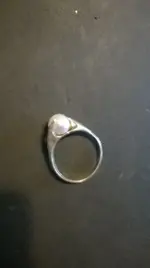Advice?
Get a time machine and go back to this same site and hit the vender areas back in the day when things cost less and they made a lot of change breaking bills.
Nowadays most everything is rounded off to the nearest dollar so way less change drops occur.
Still could be coins around venders areas, parking lots are great where people actually park their cars if it is dirt or grass, lots of pocket contents come out of pockets with their keys.
Bracelets and rings fall off hands and wrists too, and nobody hears them drop onto soft surfaces.
Some rides will cause change to fly out of pockets at an unbelievable rate.
The ones that turn you upside down are obvious.
If there was an old ride called "The Zipper" at this fair, hunt about 20-30 yards in front of this thing on the side of the direction it was spinning.
You could probably find enough clad to buy a small car if an old or even a more modern version of this ride was there and you find the right area to hunt.
If people were walking around the area there could be stuff anywhere including jewelry.
Take the F2 with you just in case the F5 becomes a little frustrating or a bit too confusing to use.
There is a learning curve, you might or might not have a smooth transition.
It is better to hit a great site with a detector you know, sometimes, than an upgraded unit that you don't.
The F2 will also find anything at this site which is shallow and fresh drops, and lots that are deeper and left over from years before, too.
THE ZIPPER
I's all about G Forces...and this one generates a ton as you are coming over the top!
Watch the second vid for an actual ride.
Notice the cage has spaces big enough to let anything that falls out of pockets or off your person to exit easily.
I talked to carny's that set up blankets at that area I suggested to catch all the change and other objects ejected on every ride.
They used the change to buy meals at every stop.
When I was a kid in the 60's the first version at our annual Michigan state fair spun much faster than the modern versions but they were slowed down due to safety concerns.
They still go fast enough to make you rich if you gather up all the coins ejected.
"Take a ride on Zipper manufactured by Chance Rides, Inc. you get in a small free spinning gondola/car and the whole ride itself rotates as you move on a track. Once you get to either end it whips your around and can also make you flip. If your on for too long it can make you sick or even throw up at the Utah State Fair in Salt Lake City, Utah.
The Zipper is an amusement-thrill ride popular at carnivals and amusement parks in the United States, Canada, Australia and New Zealand. It features strong vertical G-forces, numerous spins, and a noted sense of unpredictability.
The Zipper was invented by Joseph Brown as a part of Chance Rides, Inc., a company based in Wichita, Kansas that has manufactured more than 200 Zipper units since the ride's beginning in 1968.
Most models of the Zipper follow a similar basic format: A long, rotating, oval boom with a cable around its edge that pulls 12 cars around the ride. Except at peak times, most operators will only fill half of the cars at one time with riders. Like most carnival equipment, the ride is designed to be portable. It can be disassembled onto a truck and transported from site to site.
The first fourteen Zippers manufactured spun at much higher speeds than modern models. The boom rotated at 11 rpm and the cable system at 7 rpm. These first-generation rides kept the passenger compartments spinning on their axes constantly, creating unsafe g-forces and causing impact-related injuries such as whiplash, bruises and back injuries. The safety hazard was quickly discovered and the mechanical rpms were permanently lowered to current speeds.
On September 7, 1977, the Consumer Product Safety Commission issued a public warning, urging carnival-goers not to ride the Zipper after four deaths occurred due to compartment doors opening mid-ride. The safety restraints being attached to the door itself, riders are left unrestrained whenever the door is open. The four victims all died after falling from their compartments. The failure was traced to original spring-close latches on the doors wearing out and not being replaced. Compartments on currently operating Zippers are secured using the original latch, a redundant latch approved by the CPSC, and a large R-Key pin as a third backup.
Despite these new safety features, the same scenario was repeated in July 2006 in Hinckley, Minnesota when two teenage girls were ejected from their compartment as the door swung open. Their door was apparently not properly closed by the operator who admitted to local law enforcement that he had not inserted the safety pin (R-Key) before starting the ride. Both of the victims, Erica Matrious and Breanna Larsen, survived the incident despite facing some serious injuries. On November 2, 2006, the girls were interviewed.[1]
Many newer models of Zipper have solved this problem by completely restructuring the door lock system, also eliminating the need for an R-key. These newer models have also increased the weight of the compartments, reducing the spinning, which decreases pressure on the door latches.
Zipper operators are encouraged to employ a "no single rider" policy. The manufacturer's concern was that a person riding alone might turn sideways in the seat and remove their legs from underneath the lap bar, risking serious injury as the capsule spun. The manufacturer sent out a bulletin to Zipper owners in 1995 pointing out the risk."









